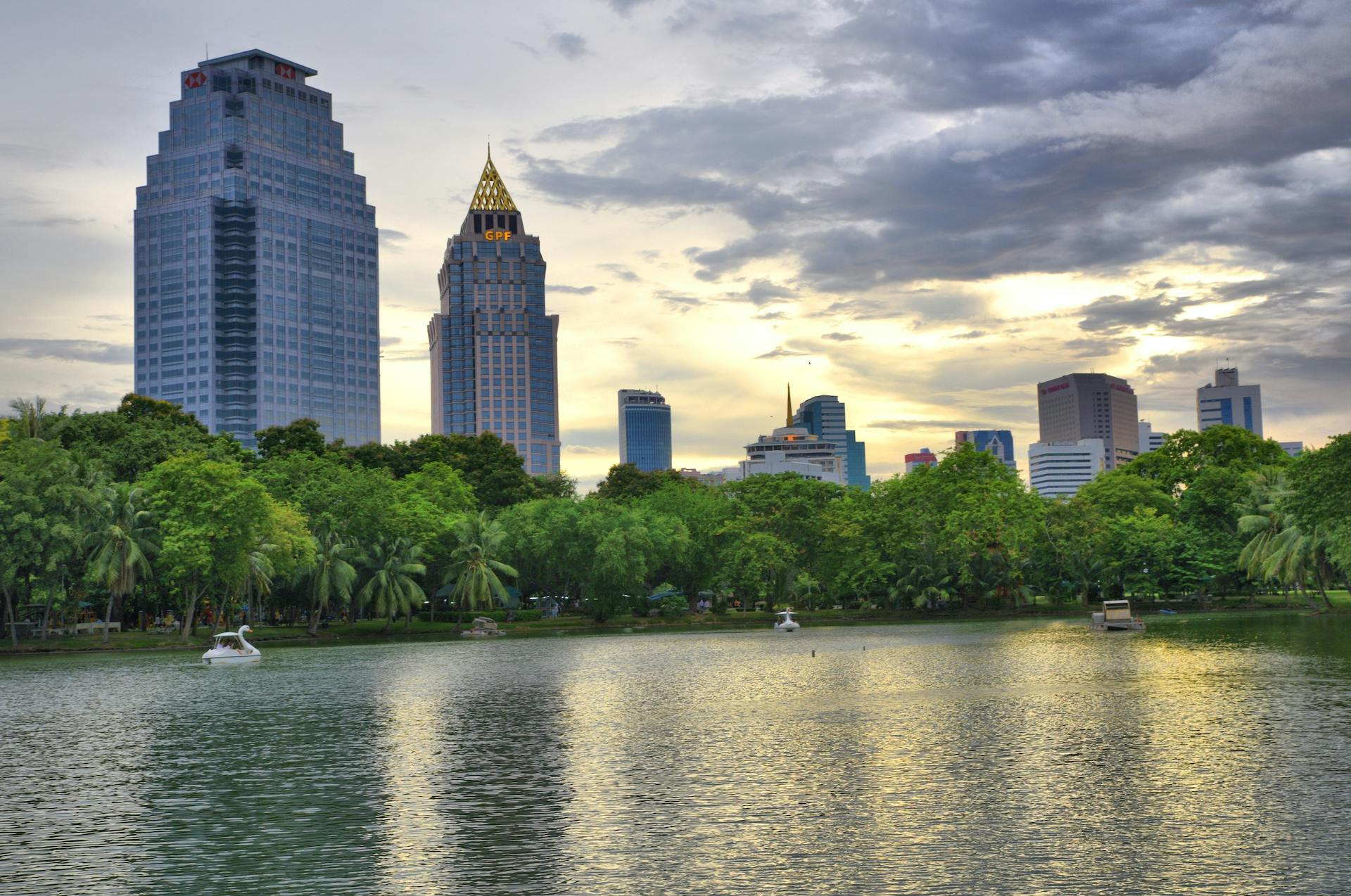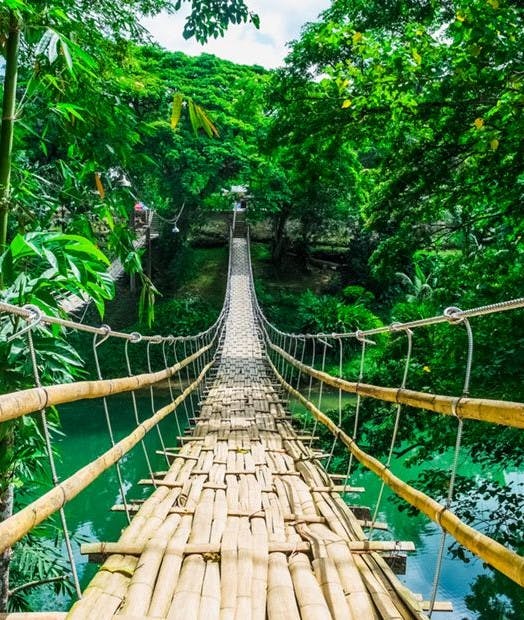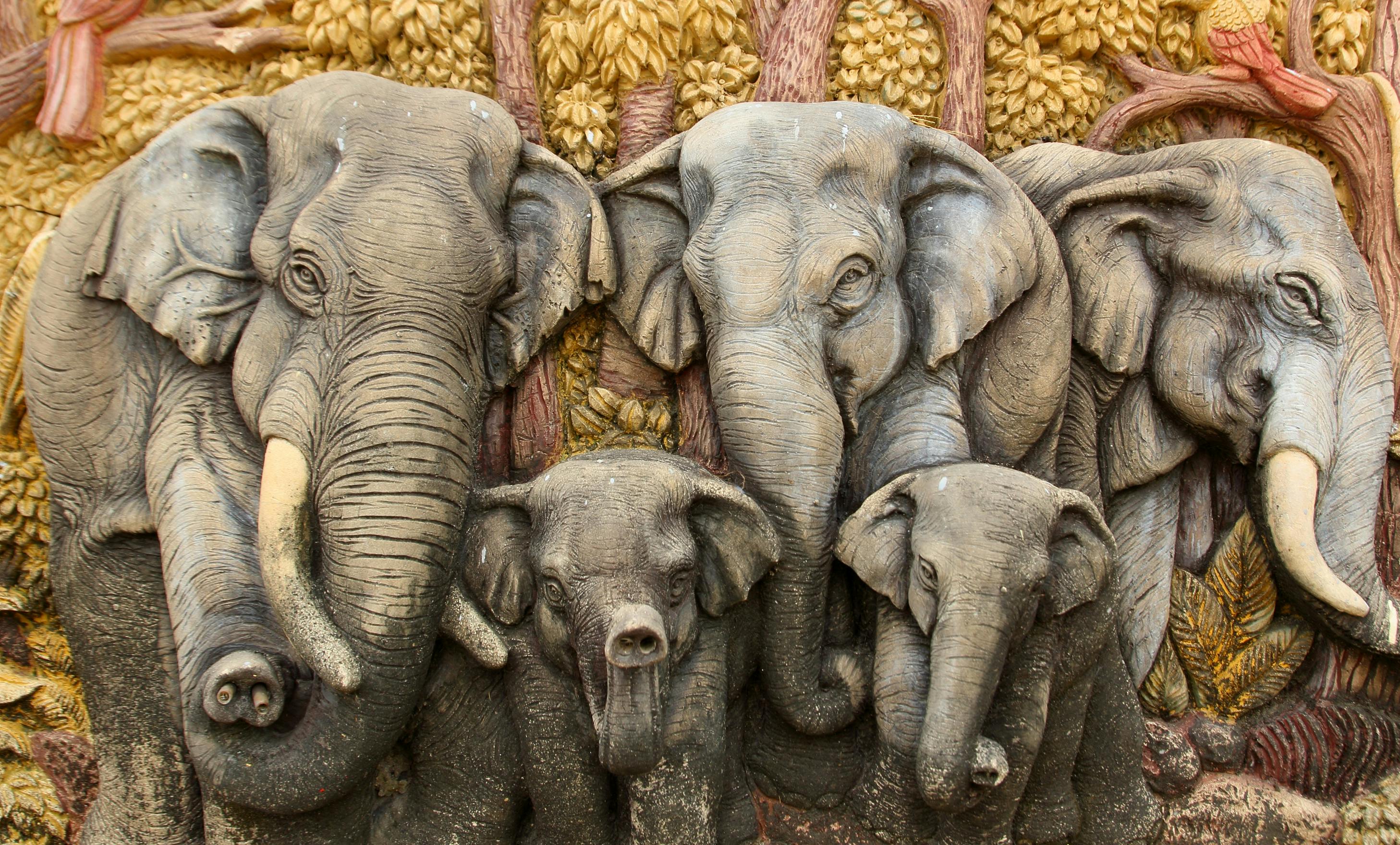How To Find Calm Amid Some of the Best Things To Do in Bangkok
Bangkok is bigger than New York and has heavy traffic, extreme population density, and brutally hot weather. Having grown up in the relatively serene Australian city of Perth, Silversea contributing writer Ronan O’Connell relished exploring the best things to do in Bangkok — but also wondered if it would be possible to find relaxation in Thailand’s fascinating but teeming capital. In 2013, he moved there and found out.
After my first day living in Bangkok, I collapsed onto the couch of my new apartment and stared out at a city that felt as though it had just attacked me. My skin was sore from the unrelenting Thai sun. My tongue was swollen by a chili-laced dinner. My ears rang with the echoes of a thousand car horns. My eyes were exhausted by a tsunami of fresh sights.

“You need to slow down,” said my then-girlfriend and now-wife, Rungtiwa, having seen me defeated by her home city. She had told me not to explore in the midday sun. She had warned me that my spicy dinner order was risky. She had advised me that Bangkok, if approached with calm and understanding, would be a cordial companion. If met with impatience, however, it would punish me.
Foreigners, I’ve since learned during a decade living on-and-off in Bangkok, often get swept along by the city’s ceaseless energy. They aim to visit too many sites, taste too many dishes and enjoy too many new experiences. In the pursuit of this perfect day and trying to experience all of the best things to do in Bangkok, they become frustrated by its traffic, wage an unwinnable war with its weather and disturb their digestive system.
“Thai people don’t rush,” Rungtiwa counseled all those years ago. “It doesn’t work here.” In a cooler, quieter, more orderly destination — like Perth or Vancouver or Berlin — tourists can conquer the city, efficiently completing a packed schedule from morning to night.

In France, you can do Paris. In Italy, you can do Rome. But in Thailand, Bangkok does you. You must surrender to its harsh, unpredictable rhythms, readjusting expectations and reorganizing plans accordingly. To navigate Bangkok’s heat and commotion, Thai people conserve their energy and find calm in moments.
How to build your day in Bangkok
Travelers can and should do the same. Avoid strenuous activities when the sun looms high, and instead break your sightseeing into two daily sessions, one completed by late morning and the other begun by mid-afternoon. Follow the local lead by earning peace via activities that are slow and meditative. Ruminating in a temple, receiving a Thai massage, admiring or creating traditional crafts, and savoring long, leisurely meals help Bangkok residents shed stress.
Above all, do as my wife advised me, and slow down. When she first visited Western countries, Rungtiwa couldn’t understand why people ate so quickly, often consuming their stacked plate of food in 10 to 20 minutes. By comparison, Thai family dinners can last hours. My wife and her relatives graze and gossip, graze and gossip, graze and gossip.
Their table is laden with up to a dozen Thai dishes, each merely tasted rather than devoured. Diners frequently dip in and out of the meal, breaking to watch television or drink a whiskey before re-joining the banquet.
If you are taking a cruise to Thailand, you are well advised to replicate this approach. Dawdle through dinner at a Bangkok restaurant by ordering just one dish at a time for you and your travel partners. This will provide time to dissect the day, discuss the meal and digest exotic foods.
Begin with a salad, such as papaya-laden som tam, or beef-heavy yum nua. Then a light soup, perhaps fiery, seafood-rich tom yum. Follow that with a noodle soup, such as addictive, coconut-infused khao soi. Go heavier with a noodle dish — pad see ew or pad thai — and an old favorite, khao pat fried rice. Next up, feel the sting of pad kra phao minced pork and kaeng phet red curry, both of which mix well with the rice. And, if you’re still capable, sign off with a sweet goodbye like khanom krok coconut pudding.
That may read like an impossible task. But it’s entirely achievable if you take your time and shackle the urge to gobble. Such a meal is advisable only at the tail-end of the day. Many Bangkok locals keep their breakfast light, keen to be nimble for the challenges ahead. You should, too.
Don’t get seduced by the sprawling breakfast buffets at most large Bangkok hotels. Instead, eat early and moderately, and stride the Bangkok streets by 9 a.m. This should be one of your two outings for the day, separated by a rest, perhaps in your hotel room or in your cruise suite, to prevent physical and mental exhaustion.
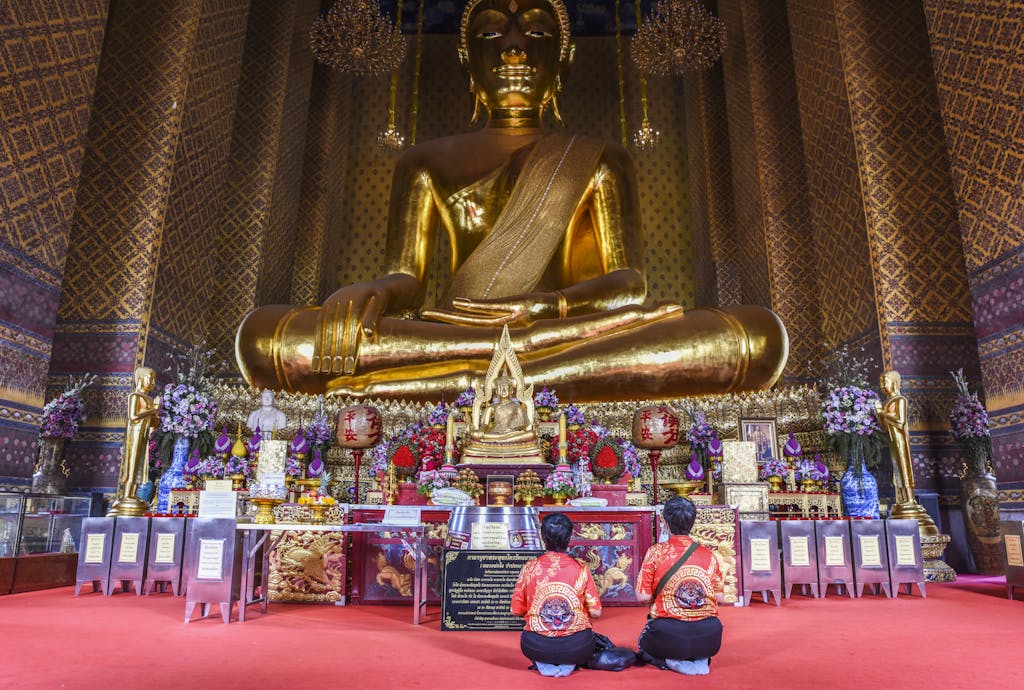
Wherever possible, Thais avoid the sun, especially in the middle of the day. After your early breakfast is a fine time to see how Bangkok residents find inner peace amid outward chaos. Rungtiwa has told me the one time she doesn’t notice her city’s din is while meditating in a Buddhist temple.
There is a soothing serenity to these religious sites. Many of Bangkok’s finest temples are in the ancient neighborhood of Rattanakosin, home to the enormous Wat Pho, the hilltop Wat Saket, the gilded Loha Prasart and the cluster of magnificent Royal temples inside the Grand Palace. Wherever you are based in central Bangkok, there’ll be a gleaming temple a brief walk away. Pause to admire its architecture, soak in its tranquillity and contemplate the world. Even for nonreligious people like me, this process is comforting.
Chill out with a massage
Similarly common across Bangkok is another key outlet of relaxation. The city has hundreds of massage parlors. Avoid the few that have female staff outside loudly soliciting business; their services are a tad too diverse. Instead, choose one of the majority, where your tension will be stretched, twisted and kneaded out of you by skilled professionals.
For centuries, massage has been a key component of Thai culture. In the West it is widely seen as a luxurious experience, something only afforded once in a while. That’s because, in my home country at least, it costs USD $50 an hour, minimum.
In Thailand, massage has long been a simple pleasure for the masses. Sessions start from just USD $6 per hour or are performed for free by friends and family who typically learned the techniques from older relatives. When we visit Rungtiwa’s Bangkok home, sh will massage her mother and her grandmother, and one of them returns the favor.
Similar to prayer, receiving a massage is a meditative experience. Under this manipulating touch, the effects of Bangkok’s traffic, noise and blazing sun fade. Many of the city’s large hotels have on-site spas, and those that don’t will happily recommend nearby, trustworthy massage parlors. These businesses cloak the streets of upmarket tourism precincts like Siam, Silom and Nana, as well as the backpacker hub of Khao San Road.
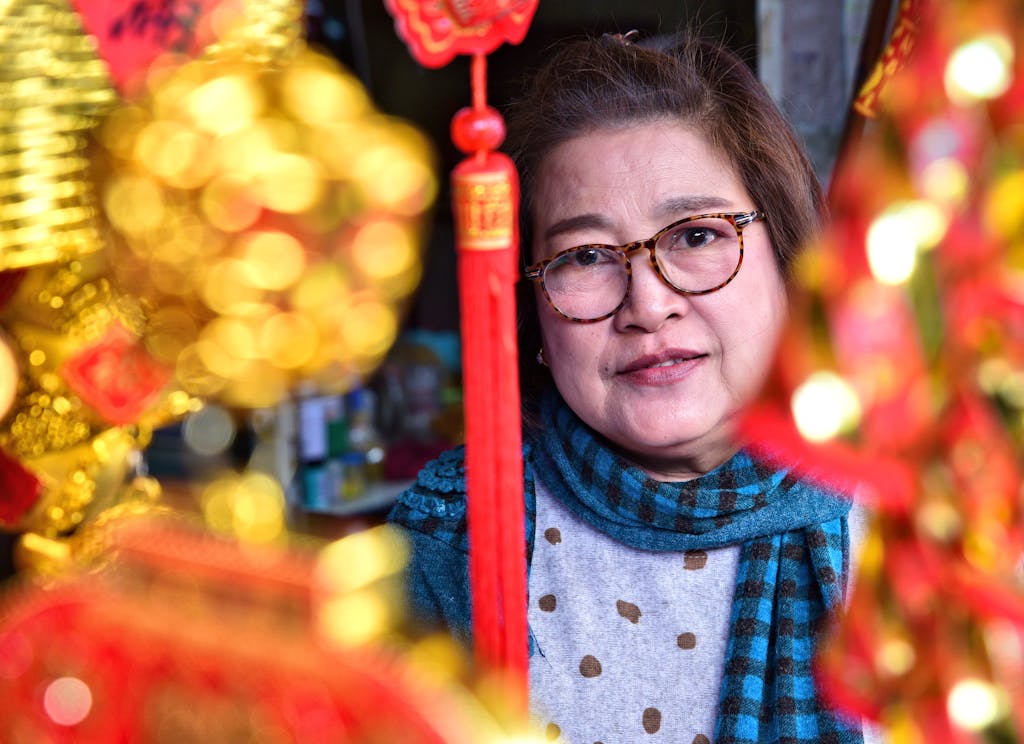
Shop for authentic art
Wandering these areas also leads you past countless shops offering supposedly traditional Thai art. Some are legitimate. Many more are dodgy, selling “handcrafted Thai products” that are actually factory-made overseas. Rungtiwa told me locals abhor the latter stores. That’s not just because they scam tourists, but also because of their disrespect of Thailand’s proud arts culture, which dates back eight centuries to a time that Thailand was the kingdom of Sukhothai.
Fortunately, I’ve found several wonderful, authentic art villages in or near Bangkok. Tourists can buy intricately carved Thai woodwind instruments at Baan Lao flute community, close to the unmissable Wat Arun temple. Gleaming metallic bowls and ornaments are produced at Baan Bu bronze village, one mile north of there.
Colorful Thai silk items are woven at Baan Krua Nua community, just behind the luxury shopping centers of Siam. And perhaps Thailand’s most revered art form, delicate Benjarong ceramics, are hand-shaped and kiln-fired at Don Kai Dee, about 18 miles west of Bangkok.
Many years ago, before I moved to Thailand, I repeatedly visited this city and did almost everything wrong. I shopped at its fake craft stores, rushed through its temples, cooked my body in the midday sun and ate spicy food far too quickly. These are mistakes made easily.
Then I moved here, heeded the guidance of my Thai partner, shadowed the actions of locals and finally made friends with this gigantic, complex and volatile city. Treat Bangkok right, and you’ll have a friend for life. Treat it like other cities, and it will not take pity.
Ready to experience Bangkok? Start by booking a cruise to Thailand among these Silversea voyages in Asia.



